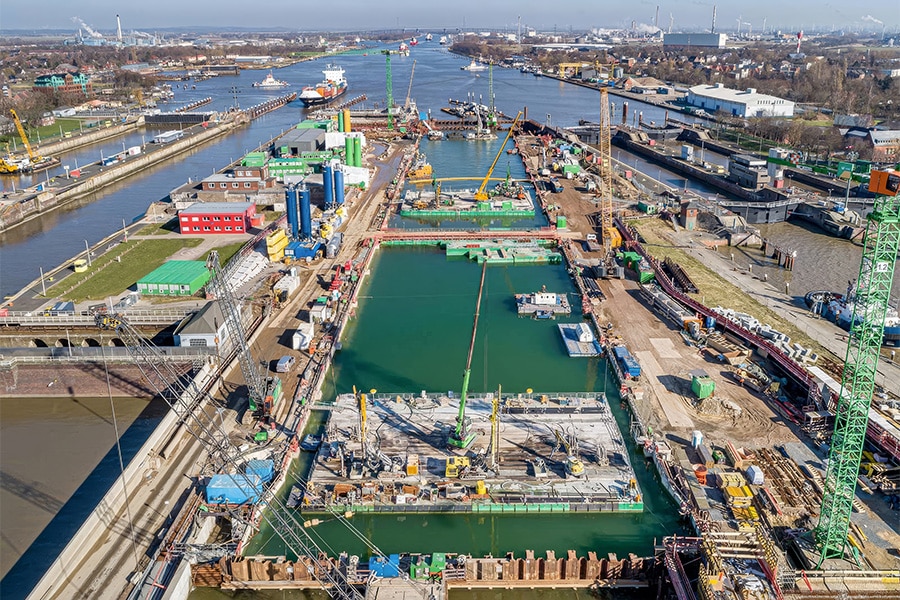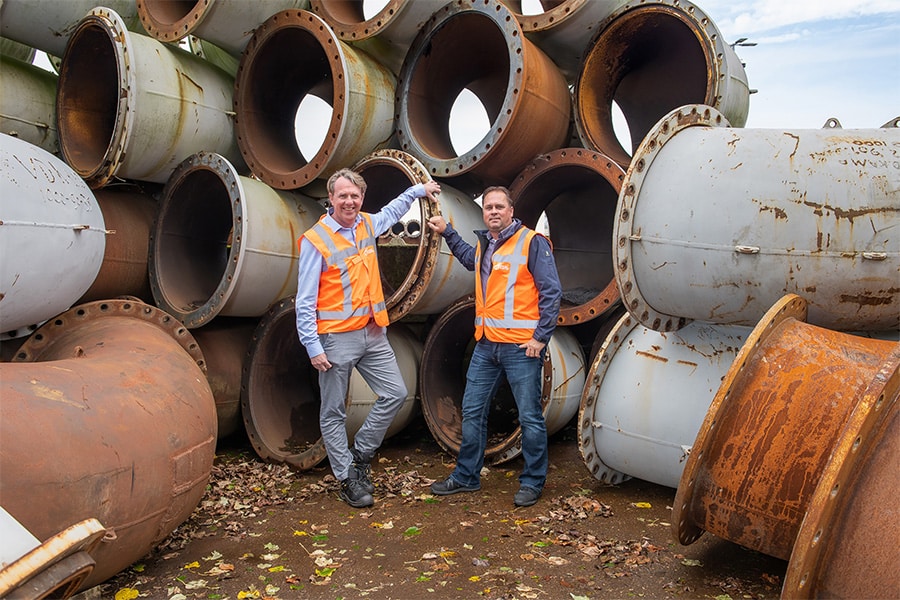
What's in the subsoil we build on?
The question every builder should ask
"When I say that topsoil planning does not think enough about issues in the subsoil, it may sound harsh and judgmental. However, practice shows that ground-level developments regularly encounter underground surprises. That can cause delays, damage, failure costs and annoyance. A shame, because none of that has to happen." Speaking is Johan de Leeuw, project manager at SGS Netherlands. We sit down with him and project leader Wilko van Kruisbergen to talk about the added value of connecting the subsurface with the topsoil. A specialty that SGS Netherlands has mastered to perfection.

The underground is crowded
"We regularly experience that above-ground activities conflict with objects located underground," says Wilko. "Think for example of digging activities for reconstructions, planting trees, (art) objects in a town square, underground waste containers et cetera. Large or small things planned from the above-ground perspective without considering objects in the subsurface but where the risk of manufacturability often lies with the contractor. Not well prepared? Then you're going to encounter all kinds of cables and pipes."
According to Johan, the underground is crowded. "Over the years, the Netherlands has become quite full of all kinds of cables and pipes. It's so easy to forget it's there, after all, we don't see them. Some cables and pipelines have not come on paper or have not come on paper properly and old networks have not been cleaned up, extra handicaps. If we look at our old cities, such as Amsterdam and Utrecht, because of the canals, you only have a narrow strip of ground where you can put cables and pipes anyway. It's full of them. Anyone who wants to get to work there and undervalues underground interests due to a lack of insight will come home with a cold shoulder."

Practical case: dyke reinforcement Wolferen Sprok
Fortunately, we are seeing changes where risks are balanced between clients and contractors. A nice practical case is formed by the 'Dijkversterking Wolferen Sprok' project of Waterschap Rivierenland. Johan: "Together with Combinatie Betuwse Waard (Ploegam, Dura Vermeer and GMB) we have been involved in this work from the tender phase. Here they did not hold a traditional tender but chose to apply a 2-phase contract. During the planning phase, the contractor is already involved and involved in the planning. It sometimes happens that the planner gets stuck in his own abstraction, so that the subsoil does not get enough attention. Within this project, we made sure that all parties not only had the necessary insights about the subsurface, but also the impact and risks surrounding cables and pipes."

Wilko adds: "In a traditional tender, the issue of 'cables and pipes' is often placed on the contractor in question as a risk and cost item. In this case, however, we identified the risks together, at a very early stage, and thought about how to manage these risks. The result is that in the implementation phase the risks of cables and pipes are well controlled and are no longer designated as top risks. As project coordinator, our colleague David Deinum plays an important role in this. With SGS you literally bring 'practice to the table'." Johan: "We make the subsurface an integral part of the project."
Also better inform the environment
SGS has also contributed to good information to the surrounding area regarding what is happening during the work. "This also creates a connection and has led to one joint land acquisition for all the work," Johan concludes. "By working with one clear picture regarding cable and pipeline work and communicating with quality, we keep expectations on both sides realistic."
Safety analysis of cables and pipes
Living safely behind the dike seems so obvious. Wilko: "As a resident of the Rivierengebied and evacuee due to high water in 1995, I like to work on the importance of water safety. For a safe dike, the safety test on the cables and pipes present must also be carried out." Testing only for a standard with a few calculations says nothing about the condition of the cables and pipes and sometimes causes unnecessary investments of societal funds. With the HWBP innovation program, the failure probability analysis for pipelines at the Wolferen-Sprok project was developed. The knowledge, experience and ability of SGS to perform non-destructive testing came in handy.
Johan: "There are different interests at play, which we as SGS bring together. Waterschap Rivierenland wants a reliable dike, the cable and pipeline owners want uninterrupted supply, and in the case of Wolferen Sprok, the municipality wanted to expand the residential area. This requires a lot of new cable and pipeline work. Since we were moving cables and pipelines anyway, we tried to connect all parties with an interest in the subsurface. By making the combination, you save time, money and disruption. So this allows initiative to come from underground focused on the future!"
Getting the space
Wilko compliments Waterschap Rivierenland: "They took the initiative for this form of contract and this gave us all the space we needed to tackle it this way, together with Combinatie Betuwse Waard." In conclusion, Johan says: "As is well known, there is a staff shortage everywhere. This is partly why Liander opted for a design and construct pilot with delegated contracting authority to Waterschap Rivierenland. Because SGS often works for grid managers, we were able to take over design tasks from Liander. This working method is special and was possible in part thanks to this form of contract."




